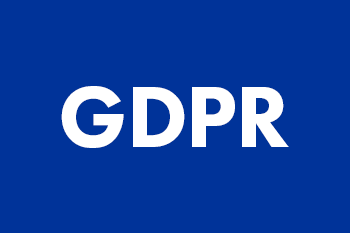
Zoom meeting burnout is real — but it doesn’t have to be.
As a Fierce Master Facilitator (and a raging extrovert) my favorite thing to do was be in the classroom — face-to-face with my learners. I loved picking up on the nuances, the smiles, and nods that told me I was resonating with the group. Frowns or slight head tilts that told me I needed to have more clarity or deeper discussion. When COVID-19 made it apparent that in-person training wasn’t going to happen, I was devastated and yet, I had a ‘the show-must-go-on’ mentality.
Since the start of forced social distancing and working from home, I’ve read the articles (like this one) and heard the phrase ‘Zoom Meeting Burnout’ countless times. I can pinpoint the exact moment this happened to me.
Simultaneously, it was the moment I realized Zoom meeting burnout didn’t have to be my reality. I’ll set the stage for you: I had just finished an 8-hour virtual training for a client. Well, let me rephrase… I had just woken up from a crash nap after an eight-hour virtual training for a client.
Eight. Hours.
Clearly and rightfully so I was exhausted. I made quite a few mistakes during that eight-hour (mistake #1) training, however, my biggest mistake was that I treated it *just* like an in-person classroom.
I was so concerned with showing up a certain way…showing up the ‘right’ way.
My attention was on me — making sure my virtual background was professional, locking my dog in the bedroom, and telling my partner the exact timing of when they could use the microwave. I was stiff, I was distracted, and I was exhausted.
After my nap, I realized that if I were going to succeed in this virtual world, and if I were going to allow others to find value in training, something had to change.. quickly.
To find the solution to managing this zoom burnout, all I needed to do was look at the definition of a Fierce Conversation. A Fierce conversation is defined as “a conversation in which we come out from behind ourselves, into the conversation, and make it real.”
I believe that, in this virtual remote-working world, people are being more ‘real’ than ever – but only when we let them. Your employees, your staff, your team, they need to feel encouraged to be ‘real’.
Steps to Avoid Zoom Meeting Burnout
So, how do we become ‘real’ during Zoom meetings or training? Well, It’s as simple as ABC:
A: Acknowledge Distractions
Since our global shutdown, I’ve started every virtual training welcoming my participants into my home: a 600-square-foot apartment in the Roosevelt neighborhood of Seattle. I let them know immediately what distractions they can expect: I have a partner who might make their way in frame and a 7-year-old border collie named Levi who might squeak some toys or pop his head in camera view (if they’re lucky).
Then, I encourage my learners to welcome me into their homes, asking them to turn on their cameras if they are able. I let them know that I understand they might have some distractions as well and that is okay. Now they feel able to be real — and that is what I’ve wanted this entire time.
B: Brain Breaks are a MUST
For long trainings or meetings, every hour, at the minimum, give your meeting participants a break! When they come back, ask them, “How did you spend your break?” “What did you do?”
There was a client of ours who I was working with for 2.5 hours a day over the span of 4 days and I LOVED knowing what they did on their breaks. The funny thing is, they loved telling me!
I found out what lunches they were eating, what podcasts they were listening to, what beverages were being consumed (I promised I wouldn’t tell), which kids needed their hair braided, and which pets needed to go potty.
The best thing about this is that I learned what was important to them. Often, my learners had 10 minutes or less to do whatever they wanted or needed. If you find out what your people are doing in those 10 minutes, you can deduce quite a bit about what’s front of mind for them, where their attention is, and what’s important when we aren’t on screen.
C: Connect Quickly
While having a company-wide virtual Zoom call is necessary for business, group breakouts of 4 to 5 people are needed for connection. A 5-minute small breakout group at the beginning of your meeting will create deeper connections and buy-in throughout the remainder of the meeting/call/training/etc.
Imagine how different your meetings would be if, within the first 5 minutes, everyone has contributed to the conversation. When I do this, I love seeing the smiling faces when I bring them back from their breakout groups. The energy is markedly different and now they’re willing to engage, they’re reconnected with their friends and colleagues and that connection reinvests them in the meeting.
It’s Time to Embrace Our ‘Real’ Selves While Remote Working
There you have it: the ABC’s of effective Zoom meetings. How do I know it works? Well, since the start of COVID-19, I’ve facilitated over 100 hours of virtual trainings. You name it, I’ve seen it. Noisy neighbors, crying children, curious roommates, playful pets, hungry partners – and that’s just the living distractions!
We have messy bookshelves and dying plants, gurgling coffee pots and questionable camera angles — the list goes on and on. I’m here to tell you that whatever your background looks like and sounds like, it is OKAY. Because while some suggest our work and home lives are blurred — I’m suggesting they’re actually blended. No, really! It’s like someone took our lives and put them in a blender.
We can no longer use our commute to transition between work and home or close our office doors when we need a quiet space to work on a project. We don’t have the time (or the energy) to ‘flip the work switch’ or ‘get into parent mode’. I also think this is a good thing.
Because of our current climate, we’re being forced to remove the ‘masks’ that we’ve had to wear our entire lives. Our ‘real’ selves are coming through our computer integrated web camera’s and it’s time we embrace this, it’s time we embrace and encourage being real.

Conversation Chaos in the Digital Age
Discover why feedback is the key to successful remote working in the digital age.





